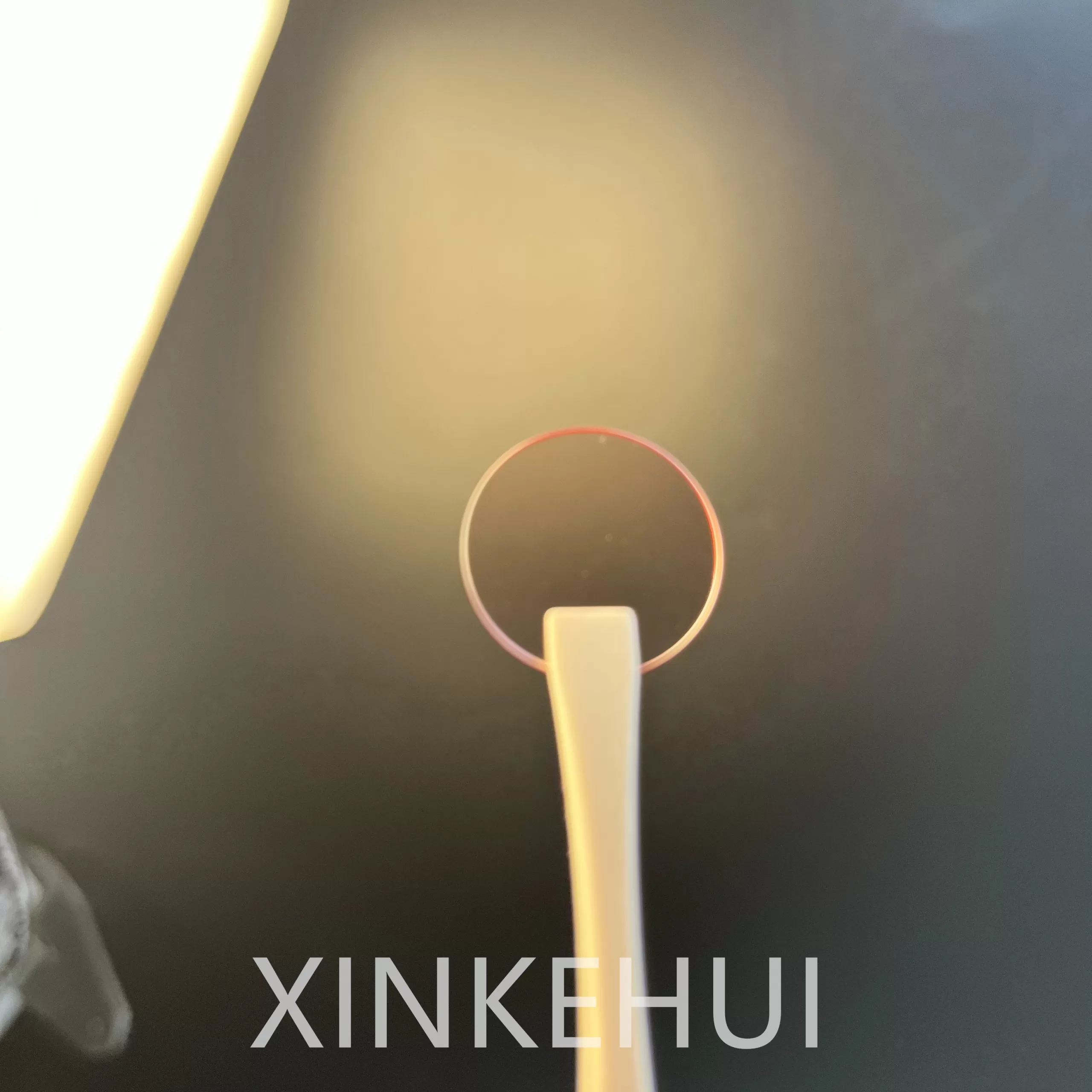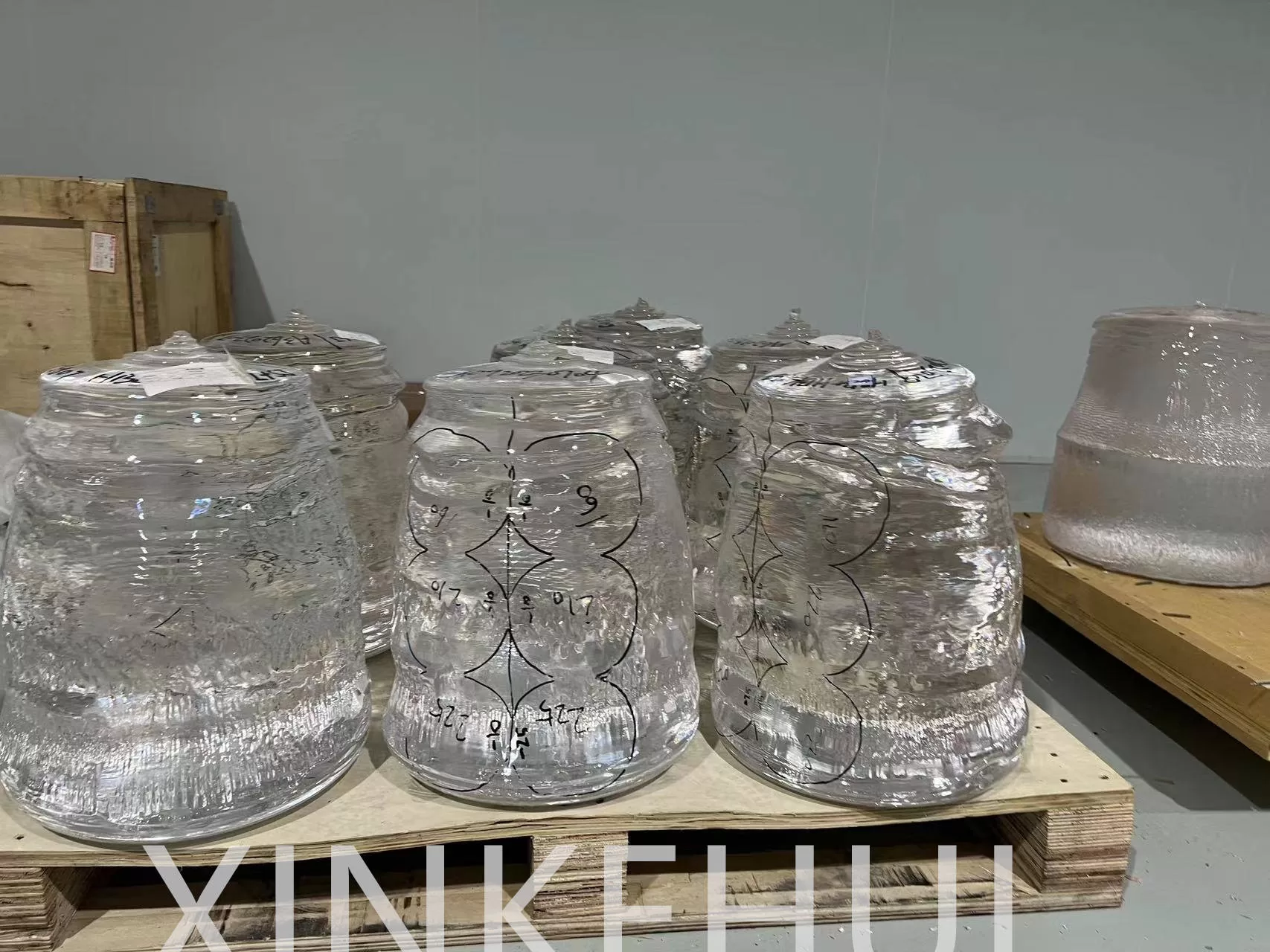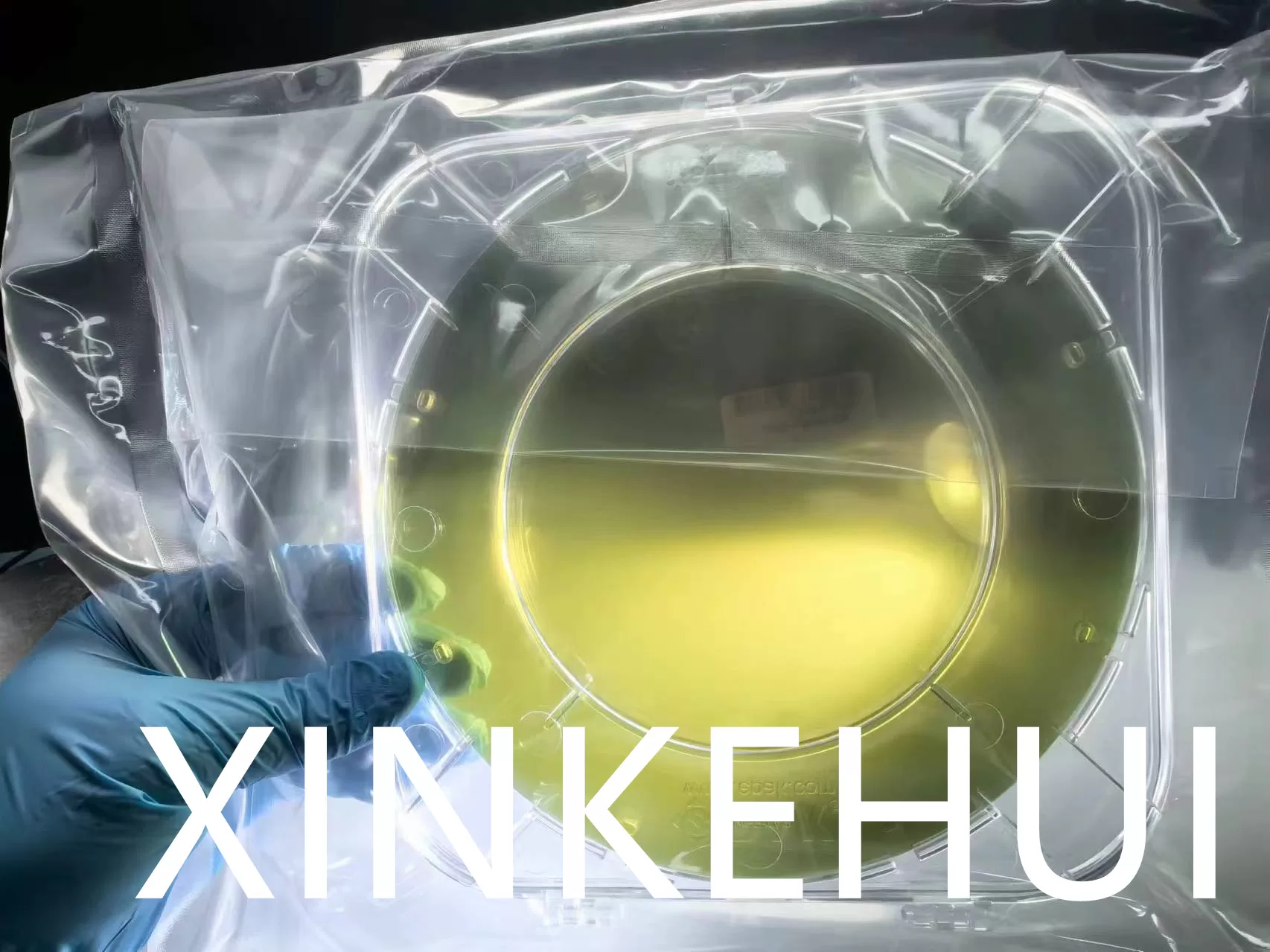Top-notch LSO(Ce) crystal Lu2SiO5:Ce(Lutetium Orthosilicate)crystal
- +86138-1617-9243
- [email protected]

Focus on the field of new material !

LSO(Ce) crystals have garnered significant interest in the field of medical imaging due to their excellent scintillation properties. In this study, we systematically investigate the luminescent properties of LSO(Ce) crystals with varying compositions and growth conditions. Synthesis techniques including the Czochralski method and the Bridgman technique are employed to grow high-quality crystals. Characterization of the crystals is conducted using techniques such as X-ray diffraction (XRD), scanning electron microscopy (SEM), and photoluminescence spectroscopy.
The influence of crystal composition, doping concentration, and growth parameters on the luminescent efficiency, light yield, energy resolution, and decay time characteristics are thoroughly examined. Additionally, the impact of crystal defects, such as color centers and impurities, on the scintillation performance is investigated. The insights gained from these studies provide valuable information for optimizing the synthesis process and enhancing the performance of LSO(Ce) crystals for applications in positron emission tomography (PET), gamma-ray spectroscopy, and other medical imaging modalities.
Overall, our findings contribute to the ongoing efforts in developing advanced scintillation materials for improved medical imaging devices, offering potential benefits such as higher spatial resolution, better energy resolution, and increased sensitivity.
| LSO(Ce) Scintillation Crystals – Optical Properties – | ||
|---|---|---|
| Property | Units | Value |
| Wavelength (Max. Emission) | nm | 420 |
| Wavelength Range | nm | TBA |
| Decay Times | ns | 40 |
| Light Yield | photons/keV | 30 |
| Photoelectron Yield | % of NaI(Tl) | 75 |
| Radiation Length | cm | 1.14 |
| Optical Transmission | µm | TBA |
| Transmittance | % | TBA |
| Refractive Index | 1.82@420nm | |
| Reflection Loss/Surface | % | TBA |
| Neutron Capture Cross-section | barns | TBA |
| LSO(Ce) Scintillation Crystals – Mechanical Properties – | ||
|---|---|---|
| Property | Units | Value |
| Chemical Formula | Lu₂SiO₅(Ce) | |
| Density | g/cm³ | 7.4 |
| Atomic Number (Effective) | 75 | |
| Melting Point | ºC | 2050 |
| Thermal Expansion Coeff. | C⁻¹ | TBA x 10‾⁶ |
| Cleavage Plane | None | |
| Hardness | Mho | 5.8 |
| Hygroscopic | No | |
| Solubility | g/100gH₂0 | N/A |
LSO(Ce) crystals, or Lutetium Oxyorthosilicate crystals doped with Cerium (Ce), possess several properties that make them highly desirable for various applications, particularly in the field of medical imaging. Here are some key properties of LSO(Ce) crystals:
Overall, the combination of these properties makes LSO(Ce) crystals highly suitable for applications in positron emission tomography (PET), single-photon emission computed tomography (SPECT), gamma-ray spectroscopy, and other medical imaging modalities, as well as in high-energy physics experiments and homeland security applications.
LSO(Ce) crystals, or Lutetium Oxyorthosilicate crystals doped with Cerium, are highly valued for their scintillation properties, finding applications in several fields:
Introduction to LSO(Ce) Crystals:
Lutetium Oxyorthosilicate (LSO) crystals doped with Cerium (Ce) have emerged as essential materials in various scientific and technological fields due to their exceptional scintillation properties. These crystals offer a unique combination of characteristics, including high scintillation efficiency, excellent energy resolution, fast decay time, and radiation hardness, making them indispensable in a wide array of applications.
Medical Imaging:
In the realm of medical imaging, LSO(Ce) crystals have revolutionized diagnostic procedures, particularly in Positron Emission Tomography (PET) and Single Photon Emission Computed Tomography (SPECT). PET scanners utilize these crystals to detect pairs of gamma-ray photons emitted by positron-emitting radionuclides within the body, providing detailed three-dimensional images of metabolic activity and disease progression. The high light yield and fast decay time of LSO(Ce) crystals enable rapid and precise imaging, facilitating early disease detection and treatment planning.
Similarly, SPECT systems rely on LSO(Ce) crystals to detect gamma-ray photons emitted directly by radionuclides, allowing for functional imaging of organs and tissues. The superior energy resolution and sensitivity of LSO(Ce) crystals enhance the accuracy and spatial resolution of SPECT images, aiding in the diagnosis and management of various medical conditions, from cardiovascular diseases to neurological disorders.
Particle Physics Experiments:
LSO(Ce) crystals play a pivotal role in particle physics experiments, where they serve as scintillating detectors in calorimeters to measure the energy of particles produced in high-energy collisions. Whether in large-scale detectors at particle colliders like the Large Hadron Collider (LHC) or in compact setups for laboratory-based research, these crystals provide precise and reliable measurements of particle energies and interactions. Researchers leverage the high density, fast response time, and radiation tolerance of LSO(Ce) crystals to study fundamental particles, search for new physics phenomena, and unravel the mysteries of the universe at the subatomic level.
Security and Radiation Detection:
The applications of LSO(Ce) crystals extend into the realm of security and radiation detection, where they are employed in various systems and devices to safeguard against nuclear threats and ensure public safety. Radiation portal monitors, handheld detectors, and cargo screening systems utilize these crystals to detect and identify radioactive materials, thereby preventing illicit trafficking and enhancing border security measures. The sensitivity, energy resolution, and reliability of LSO(Ce) crystals make them indispensable tools in the fight against nuclear proliferation and terrorism, contributing to global efforts to maintain peace and security.
Gamma-Ray Spectroscopy:
LSO(Ce) crystals find widespread use in gamma-ray spectroscopy, a technique employed in nuclear physics research, environmental monitoring, and nuclear safeguards. By analyzing the energy spectrum of gamma-ray emissions from radioactive isotopes, researchers can identify and quantify specific isotopes present in samples, allowing for precise measurements of radioactivity levels and isotopic compositions. The excellent energy resolution and linearity of LSO(Ce) crystals enable accurate spectroscopic analysis, providing valuable insights into nuclear processes, environmental contamination, and the proliferation of nuclear materials.
Astrophysics and Space Science:
In the realm of astrophysics and space science, LSO(Ce) crystals contribute to our understanding of the cosmos and the universe’s most energetic phenomena. Space-based telescopes and detectors utilize these crystals to study gamma-ray bursts, cosmic rays, and other high-energy events occurring in distant galaxies and cosmic environments. LSO(Ce) crystals withstand the rigors of space while delivering precise measurements of gamma-ray emissions, enabling scientists to probe the nature of black holes, supernovae, and other astrophysical phenomena, shedding light on the origins and evolution of the universe.
Homeland Security and Nuclear Safeguards:
LSO(Ce) crystals play a critical role in enhancing homeland security measures and nuclear safeguards by detecting and identifying radioactive materials in various contexts. From monitoring nuclear facilities and safeguarding nuclear materials to screening cargo shipments and securing borders, these crystals serve as key components in radiation detection systems deployed worldwide. Their sensitivity to gamma radiation, coupled with fast response times and low false alarm rates, ensures effective detection and mitigation of nuclear threats, safeguarding public health and national security interests.
Emerging Applications and Advancements:
Beyond their established applications, LSO(Ce) crystals continue to find new uses and drive technological advancements in diverse fields. Emerging applications include their integration into wearable radiation dosimeters for occupational safety, deployment in compact gamma-ray imaging systems for environmental monitoring, and incorporation into next-generation medical imaging devices for personalized healthcare. Additionally, ongoing research efforts focus on enhancing the performance and scalability of LSO(Ce) crystals through innovations in crystal growth techniques, material engineering, and detector technologies, paving the way for future breakthroughs in science, medicine, and security.
Conclusion:
In conclusion, LSO(Ce) crystals represent a cornerstone of modern science and technology, with far-reaching implications across multiple disciplines. Their exceptional scintillation properties, coupled with versatility and reliability, enable breakthroughs in medical diagnostics, scientific research, security, and space exploration. As advancements in crystal growth, material science, and detector technologies continue to accelerate, the potential for LSO(Ce) crystals to drive innovation and address societal challenges remains boundless, shaping the future of healthcare, scientific discovery, and global security.
What is lso crystal?
Lutetium oxyorthosilicate (LSO) or lutetium yttrium oxyorthosilicate (LYSO) are the scintillator materials most widely used today in PET detectors due to their convenient physical properties for the detection of 511 keV annihilation photons.
What is the melting point of LSO?
The melting point of LSO crystal, however, is 2150 °C which is very close to the breakdown temperature of iridium crucible.
What are scintillation crystals used in pet?
In Positron Emission Tomography (PET) imaging, scintillation crystals serve as the primary detectors for capturing the gamma-ray photons emitted by positron-emitting radionuclides introduced into the body. These crystals convert the energy of incoming gamma rays into visible light, which is then detected and processed to generate images of metabolic activity and physiological processes within the body. Several types of scintillation crystals are commonly used in PET detectors, each offering unique properties and advantages. Some of the most widely used scintillation crystals in PET imaging include:
These scintillation crystals are typically coupled with photodetectors such as photomultiplier tubes (PMTs) or silicon photomultipliers (SiPMs) to capture and amplify the scintillation light, allowing for accurate detection of gamma-ray events in PET detectors. The choice of scintillation crystal depends on factors such as imaging performance requirements, cost considerations, and technological advancements in the field of PET imaging.



